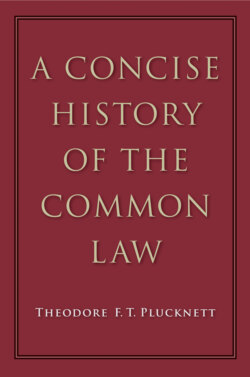Читать книгу A Concise History of the Common Law - Theodore F. T. Plucknett - Страница 90
На сайте Литреса книга снята с продажи.
THE SHERIFF AS JUDGE: VISCONTIAL WRITS
ОглавлениеTo this jurisdiction whereby the county court administered justice, was added another jurisdiction exercised by the sheriff in the county court in virtue of a royal writ addressed to him, beginning with the word iusticies, “do justice upon” the defendant “so that rightly and without delay he render” to the plaintiff, e.g. a debt which he owes. The old view that these writs of justicies were an attempt to revive the county so as to relieve congestion at Westminster is no longer tenable, for it is now known that our earliest registers of writs contain many such writs, and that the more familiar forms returnable at Westminster are a later development. Certain other writs were also “viscontial”, giving the sheriff jurisdiction, although not drawn in the form justicies. The implication seems clearly that down to the middle of the thirteenth century a large part of the nation’s litigation was in the county court.2 In this type of proceeding the sheriff was a judge in the modern sense, and the county court was merely the occasion upon which he exercised his jurisdiction. So complicated a situation could only result in confusion, and in fact it is very difficult to disentangle the two branches; Fleta3 was able to assert the existence of the difference, but after his day the boundaries became obscured (partly as the result of legislation), until the classical doctrine as described by Coke4 makes the suitors judges of the court in almost all cases. Thus was fulfilled the ancient policy of the crown in reducing the judicial importance of the sheriff at every possible opportunity.
